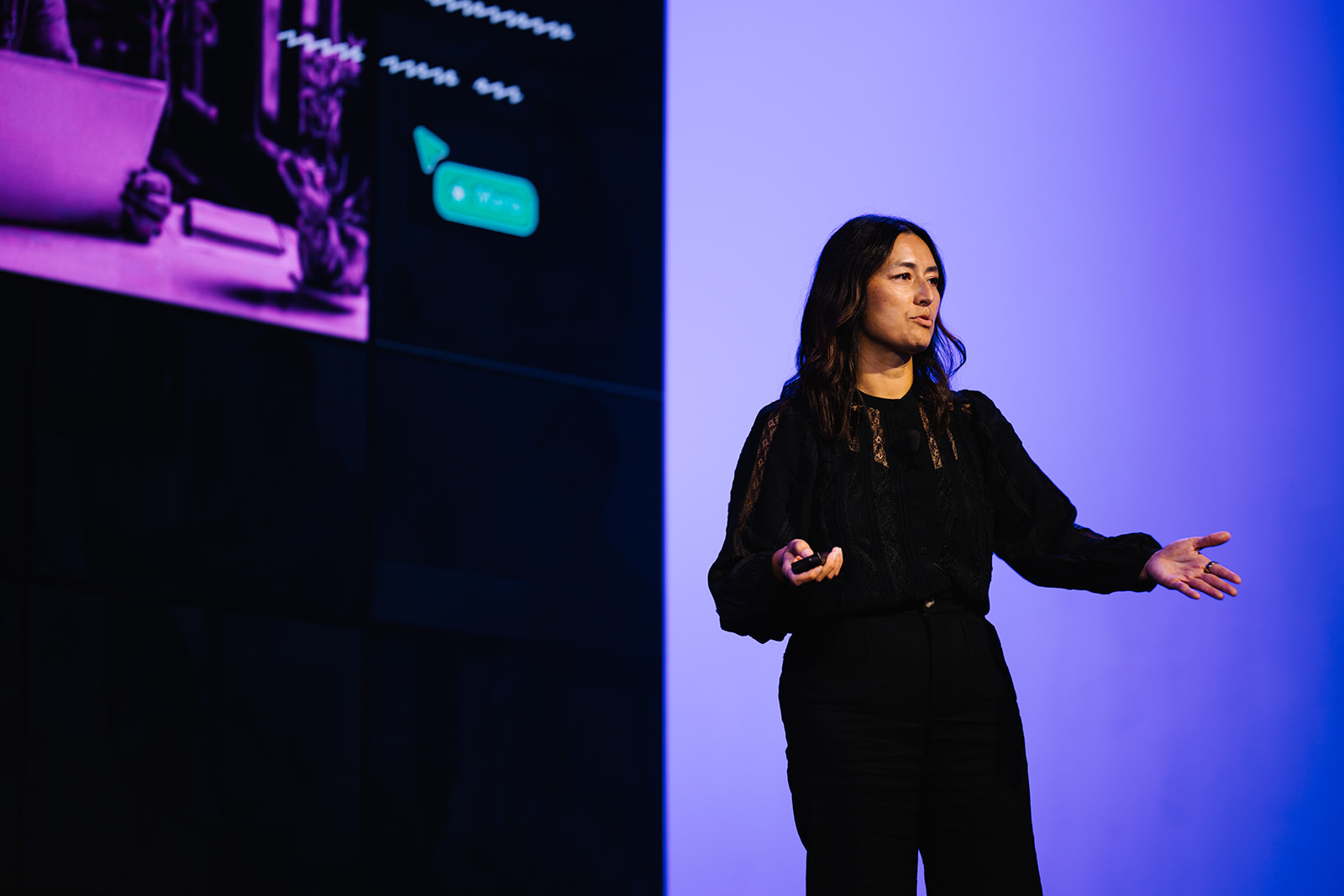“Welcome to the era of collaborative selling. The age of siloed processes is over. The age of misaligned teams is over.”
When I got on stage at the Mural Customer Symposium in New York, this is what I told the room: exactly where I think we are in enterprise sales right now.
I wanted the audience to hear from people already leading that change. Not future plans. Not theory. Real operators: Coca‑Cola, IBM, Publicis Sapient. Each is closing complex deals in environments where cycles are long, stakeholders change, and the competition is always circling. A year’s worth of conversations with sellers all came down to three frustrations:
- Long cycles that drag
- Processes that swing wildly between deals
- Teams showing up to the customer misaligned
When teams work collaboratively, they align faster, get to outcomes sooner, and win more. This panel made that point with stories every leader in the room could use. We caught the whole conversation on video, so if you want to see the stories and reactions firsthand, you can watch it here:
Here’s my take on the moments and messages that stood out most.
Building trust in sales starts before the first meeting
In sales, trust isn’t soft. It’s hard currency. You spend it every time you ask for a decision. You invest it when you give the customer something they can shape.
Jana Seaman, Director, Sales Enablement from Coca‑Cola put it simply: “All your customer needs is something to respond to.” She told a story about walking into a retail planning session with a rough plan. Not polished. Not perfect. The buyers started adding their own ideas. That’s ownership. Months later, getting to “yes” was easier because they were part of the plan from the start.
Lisa Lee, Strategic Sales Lead from IBM connected it to the scoreboard: “Relationships are the number one thing that win or lose deals.” Trust isn’t abstract. It’s measurable in outcomes. Erik Gottesman, Group VP from Publicis Sapient added the current reality: “Generative AI ups the ante in terms of how you build and sustain trust. Is the AI auditable? Is it explainable when AI is participating in the collaboration or the shaping of the opportunity?”
My takeaway: stop waiting for perfect. Give the customer something they can react to and shape, then be ready to explain and stand behind the origins of every idea, whether human or AI‑driven. That’s how trust compounds.
Too many sellers wake up when the RFP lands. By that point, the problem is already defined, often by your competitor. Lisa’s team works the other way: “We’re really focused on originating and co‑creating with clients.” These conversations happen months before procurement. By the time a formal process kicks in, the proposal already feels like the customer’s idea.
Erik put the edge on it: “Stay closest to your client… and closer than the competition.” It’s not about how many meetings you log. It’s about being part of the conversations that shape the need in the first place.
Winning complex deals starts with visible context and people
Quarter close has a way of crowding everything else out. Deals get lost in what I call commercial gymnastics: late POs, legal back‑and‑forth, pricing drama. Lisa’s team uses what she calls a “value proposition on a page” in Mural as a single source of truth for each deal. They begin it at qualification and update it as the opportunity progresses, capturing evolving context, client input, and relationship changes … all in one place. By the time the deal closes, everyone knows what was agreed on and why it matters.
From a CRO seat, that’s not optional. If a new stakeholder joins and they can’t get the full picture in minutes, you’ve just restarted your sales cycle.
One change in the buying committee can reset your deal. Erik didn’t sugarcoat it: “The biggest source of uncertainty are people.” Eric’s teams work to capture and update key client context as opportunities evolve, including changes in relationships and stakeholder churn, the biggest source of uncertainty in long sales cycles. Anticipating shifts in what matters to the customer before competitors do can be the difference between winning the work and keeping it.
Collaboration gets romanticized. The truth is, sometimes it’s about forced choice. Trade‑offs in full view. Jana shared a story from a session with a major grocery retailer. Their initiatives for the year were laid out in a mural when someone on the buying team pointed to a slim‑can promotion they’d seen elsewhere and said, “We want that too.” Her team used Mural to make the trade‑offs visible and guide the prioritization conversation in real time.
Sales alignment fuels velocity and bigger wins
AI isn’t about speed for its own sake. It should take the wrong work off the table, like the tasks that keep sellers away from customers. Jana’s example: customer operating model prep used to take up to eight hours. Now it’s minutes. That time goes back into conversations that actually move a deal. And Erik’s reminder still stands: none of that speed matters if the source isn’t defensible.
Erik told the story of their early Mural adoption. At first, the infinite canvas was exciting, and intimidating. Templates helped them get started. But the real leap came from keeping murals filled with the right context. Here’s the point from my view: in complex selling, the more fragmented your context is, the slower you move. Keep everything visible, up to date, and in one place. That’s how you create velocity without sacrificing judgment.
Lisa said it straight, when different parts of the business approach the same customer without a unified story: “The client is very confused on how you’re showing up… and it’s a deal killer.” Same logo, different story. And if you can’t get aligned internally, you can’t expect to earn trust externally.
Lead the era of collaborative selling (or watch others win)
My bottom line? It’s not okay to:
- Show up fragmented
- Create disjointed customer experiences
- Lose deals for reasons you control
The leaders on this panel made clear: you do not have to accept long cycles, misalignment, and lost context as normal. Collaborative selling changes the math. When you lead this way:
- Trust builds faster and lasts longer
- Alignment needs fewer meetings
- Context survives turnover
- Decisions stick
- Pipeline starts earlier
The era of collaborative selling is here. Ready to work faster, together? Watch the Mural Customer Symposium to see how human‑centered AI is transforming teams like yours.


.webp)
_Hero_Image_1440x810.avif)









